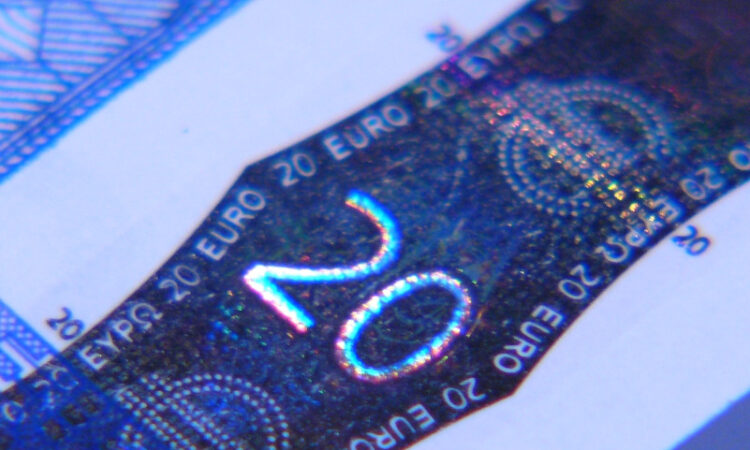
Special income arising from an EU freeze of Russian assets belongs neither to Russia nor the EU and can rightly go to Ukraine, according to a legal blueprint on how to help fund post-war reconstruction.
“These revenues do not constitute sovereign assets and do not have to be made available to the Central Bank of Russia under applicable rules, even after the discontinuation of the [EU] transaction prohibition,” the EU foreign service (EEAS) said in a 12-page text, dated Tuesday (12 December).
“Measures concerning these unexpected and exceptional revenues are, therefore, without prejudice to the international rules on state immunities,” it added.
But the “exceptional revenues” — estimated to be €3bn a year at current interest rates — don’t belong to EU treasuries either, the EEAS said.
EU capitals “cannot legitimately expect to gain what would constitute an undue and unintended economic benefit” of the anti-war sanctions regime, it warned.
“It is therefore appropriate and necessary to ensure that the extraordinary and unexpected profits … benefit Ukraine,” it said.
The proposed EU measures run the risk that global investors flee European financial institutions, if they feared their assets could one day face a Russia-type fate.
Belgium’s Euroclear, for instance, has frozen €191bn of Russian money, but this is just a tiny part of its asset-sheet, which was worth some €36 trillion in 2022.
But at the same time, the longer Russia drags out the war, the more money the EU scheme will generate for Ukraine’s future.
The €3bn-or-so a year for Ukraine will keep “accruing in the time period between the entry into force of this decision and the moment when the temporary restrictive measures concerning assets and reserves of the Central Bank of Russia will be discontinued”, the EU proposal said.
The EU text made pinpoint clear where the annual €3bn of legal-limbo money comes from.
It arises because interest, maturing-bond payments, and other dividends linked to the Russian “cash balances” are going in, but no payments are going out due to the EU freeze.
All this growing money will still belong to Russia.
But when firms such as Euroclear “prudently manage” the inflated Russian accounts, they generate the war-time windfall for themselves, to which neither they or Russia have a rightful claim, the blueprint said.
The EU proposed creating a two-step regime.
Step one would see EU securities boards which hold €1m or more of frozen Russian funds to create new accounts in which they would keep “revenues corresponding to interest, coupon, dividends or other income on or value accruing from or generated by the [Russian] cash balances”.
They would also hold back the “net profit” that they generated by their “prudent management” and report how much there was in their new Ukraine funds to the European Commission “by 30 June of each year”.
Step two would see EU states decide how to pool the Ukraine money into the EU budget, based on a legal template that hasn’t yet been drafted.
Meanwhile, EU states will still be entitled to levy corporate taxes on the “net profit”, while being voluntarily “invited” to “contribute a large share” of the taxes to the Ukraine fund.
EU states will also decide in future “the amount that central securities depositories may provisionally and gradually retain in view of complying with statutory capital and risk management requirements”, the proposal noted.
The risk of global flight from EU financial centres aside, going after Russian assets also raises the risk of Russian retaliation.
But the draft EU measures are designed to address this risk.
“To protect the concerned central securities depositories, it is appropriate to prevent the satisfaction of claims in connection with any contract … the performance of which has been affected, directly or indirectly, in whole or in part, by retaliatory measures taken by the Russian Federation,” the proposal said.
“This concerns in particular the illegal seizing or confiscation of assets owned by or held on behalf of central securities depositories, which were frozen by the Russian Federation,” it added.
Sanctions and vetoes
The Russia frozen-asset talks come as EU countries also put finishing touches on their 12th round of Russia sanctions.
These are to feature a ban on Russian diamonds, more dual-use tech, and more visa-bans and asset-freezes on Russian officials and entities.
“In principle, there’s an agreement, but Austria has an analytical reserve,” an EU diplomat said. (‘Analytical reserve’ is jargon for when an EU embassy in Brussels asks for extra time to consult with its capital before signing off.)
In this case, the delay concerns a dispute between Vienna and Kyiv about an Austrian bank doing business in Russia.
EU leaders are also discussing whether to assign Kyiv €50bn in the long-term at their summit in Brussels on Thursday night and Friday.
But the Moscow-friendly Hungarian prime minister, Viktor Orbán, has threatened to derail plans by vetoing the Ukraine decisions.
And Austria’s close ties to Russia also bode ill for future EU unanimity on the frozen-assets move.






